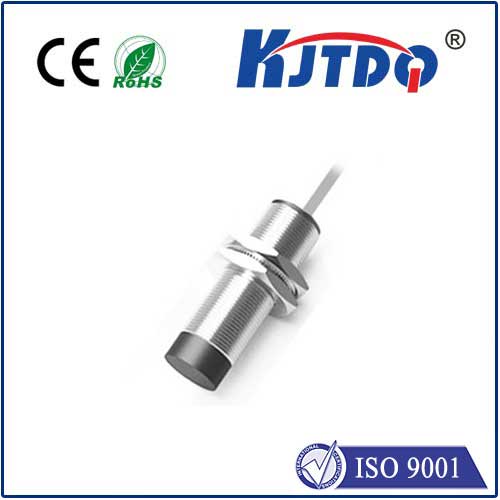
Two wire proximity switch is a non-contact inductive switch widely used in the field of industrial automation control. Its working principle is as follows:
working principle:
- Induction principleThe two-wire proximity switch is mainly based on the principle of electromagnetic induction or capacitive induction. When a metal or other conductive material approaches the sensing area of the switch, it will change the electromagnetic field or capacitance value of the internal sensing circuit of the switch, thereby triggering the switch action.
- output signalWhen sensing an object, the two wire proximity switch will change the output state (such as from high level to low level) and transmit this signal to the control system through the power line. Due to the fact that the switch only has two wires, one is a power line and the other is used as both a power line and a signal line.
Application scenarios:
- position detectionCommonly used to detect the position of objects, such as sensing the passage of objects on a conveyor belt.
- Counting functionCan be used in counting systems to detect the number of passed objects.
- Limit controlAs a limit switch for mechanical devices, it prevents excessive movement of the equipment.
advantage:
- Contactless detectionAvoiding mechanical wear and pollution, extending the service life.
- High sensitivityIt can accurately sense the approach of metal objects and has a fast response speed.
- Easy to installDue to having only two wires, wiring and installation are more convenient.
matters needing attention:
- Applicable environmentAttention should be paid to interference sources in the environment, such as strong magnetic or electric fields, which may affect the induction effect.
- Load capacityDue to the transmission of output signals through two wires, the load capacity may be limited, and the appropriate switch type should be selected according to the specific application.
This type of proximity switch is widely used in automation equipment, such as machine tools, conveyor belts, packaging equipment, etc.
Related Q&A FAQs:
1. Is the detection accuracy of two-wire proximity switches the same on objects made of different materials (such as metal and non-metal)?
Users may want to know the difference in accuracy of two-wire proximity switches when detecting different materials, and whether it is necessary to adjust the sensing distance or replace the type.
2. Compared to three wire proximity switches, which one is more suitable for use in complex circuits?
Users may compare the advantages and disadvantages of two-wire and three wire proximity switches, especially in complex circuits or control systems.
3. How stable and reliable is the two-wire proximity switch under long-term continuous operation?
Users may be concerned about the performance of two-wire proximity switches during long-term continuous operation, especially their durability and susceptibility to environmental factors.
